The Beginning I was born in Surendranagar, a city in Gujarat about 150km ahead of Ahmedabad. Initially, my mother and father traveled to small villages to buy mirror work skirts and saris from Kutch and tried to sell them in Delhi… and they sold. Then, someone gave her a sari to sell and she sold in Delhi’s Sundar Nagar Market. After that, they began to travel to small places to buy stuff – in those days 10,000 rupees could get you a lot of stuff, so much! From 10,000 rupees you could make 2,000-3,000 rupees profit. After that, my mother started doing this regularly. She used to take me along. I didn’t go to school but instead, I was married at 13. When I was 15 years old, I joined them. I have been doing this for 35 years now.
Work We have a big family in our village, my eldest son and his wife live with us. We are in a joint family and when I am out of the house, she is a big support – food, cleaning, taking care of the children. My sister, Rajini, has a stall in Janpath market where she sells cushion and bed covers and sometimes I take my sarees and sit with her. We are separate families but there is a lot of love between us, and so we help each other and try to work as one. My husband is a pujari (priest) in a temple in Gujarat; he takes care of the temple and also helps find sarees for me to sell. At the temple they have many visitors from all over Gujarat, including some from the royal family – he has all their mobile numbers. When they have something to sell, they call him and ask if there is any interest to buy it, if it’s nice he buys it and gives them the money and takes it. My son works directly with me and we also travel together to Rajasthan and Mumbai to select garments. Out of the all things I do in my job, I enjoy selling the most – and sitting in trains! To take your lunch…to go and come. It takes us days to travel across the country. In a month, I spend around 20 days out of my house. We need to travel. My husband will get a call that there is some stuff to see in Gujarat, and he will go. Similarly, there is stuff everywhere and I will tell my son he has to go to look at it. My husband takes care of Gujarat, my son of Rajasthan and I go to the other places with my younger son.
There was one time when I loved something so much, I decided to keep it for myself. It was a huge tent done in the Mochi stitch that I purchased for four lakh rupees and I wanted it for when I became an old lady and could sell it and live well.
Why people sell old, beautiful things In the old days, many people were royals – today, there are hardly any. They know what is of value and want to sell it. For instance, this saree (the patola), everyone wears it – even the Tata’s and Birla’s. Everything has a value, some of these will double value in two years. People buy it with love, wear it with love and sell it with love. There was one time when I loved something so much, I decided to keep it for myself. It was a huge tent done in the Mochi stitch that I purchased for four lakh rupees and I wanted it for when I became an old lady and could sell it and live well. But during a very difficult period in my life, when my son’s two-year-old daughter had cancer, we had to sell many of our good things. At last, I sold the tent to pay for her treatment at Gangaram hospital in Delhi. I sold that tent then to the old owner of Bharani jewelers in Delhi for four lakh rupees – he is a very nice man. They say that in bad times there is less money – today, that tent would be 30Lac.
Inspiration My favorite design is the patola because it is from Gujarat, my home. There is such a nice story of patolas, the way it’s made and value is great. You look at the colors and no matter who you are – you fall in love and want to take it. They are my favorite. Patolas are made by adding many different floral colors into the weave using Gandhi’s thread (khadi). Within Gujarat’s royal families, there can be no marriage without a patola! The Patan’s are the only families that still make this kind of sari. You can tell the difference between a real and a fake one with your hand.
Today The market has not really changed in the last 10 or 15 years. The only thing is that a patola saree that used to sell for 5000 rupees now goes for 20,000 rupees. The rates of everything are increasing, that is the only change. Also, younger customers ask for new styles but when their mothers explain to them the value of these traditional pieces, they understand and appreciate our sarees. Still, we do keep some new pieces to sell to boutiques, especially dupattas to accompany the suits they sell. Shawls and patolas sell the most amongst our regular customers. What keeps our business going is the long relationships we have with clients whom we have known for decades. In Janpath, where my sister works, we have regular customers who appreciate old pieces but now there is demand for new purses, jewelry and cushions. In Janpath, whatever is selling results in everyone running to sell the same thing, so we don’t keep as many of our older pieces there. For us, we don’t keep new things, that’s not our work. There is no market for new things with me, my work is routine – there is no need to change it.
note: translated from Hindi
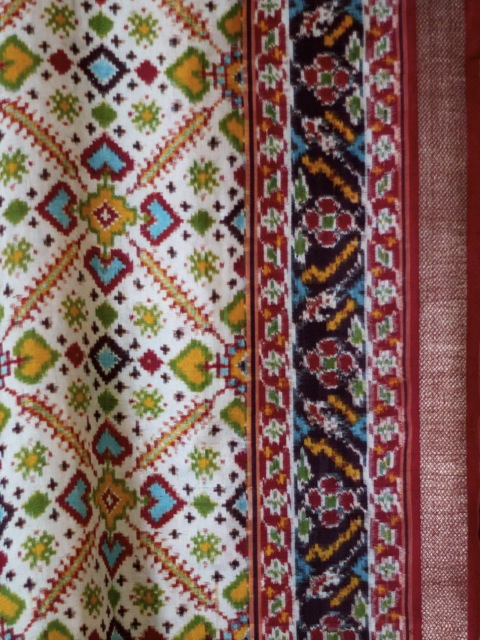
Above: Silk double ikat patola sari
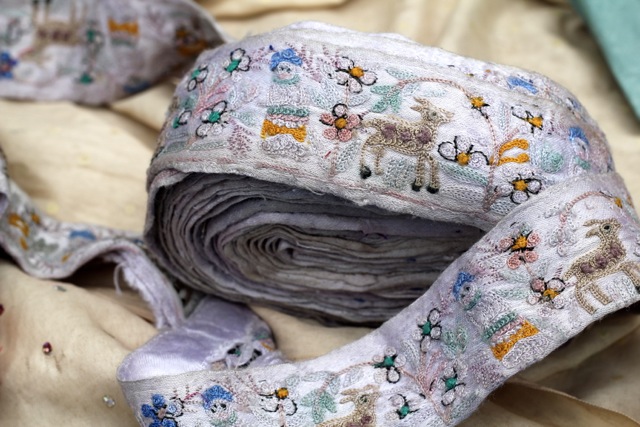
Above: Silk Parsi border
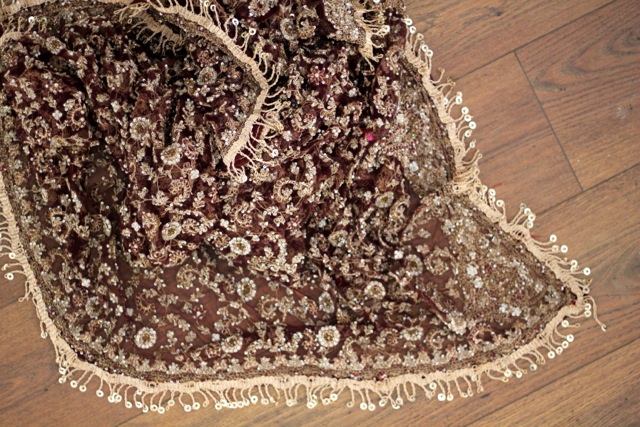
Above: Zardozi dupatta
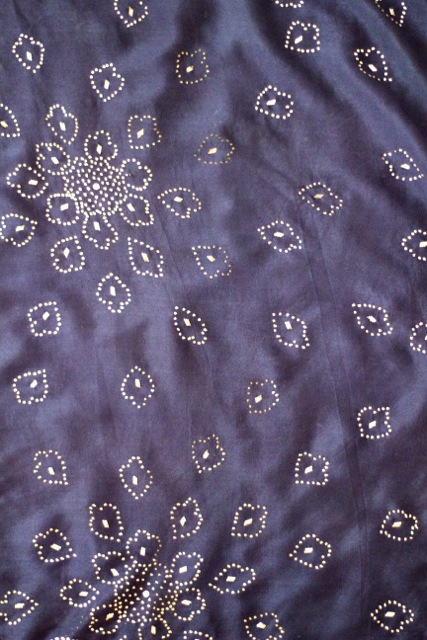
Above: Navy silk mukesh sari
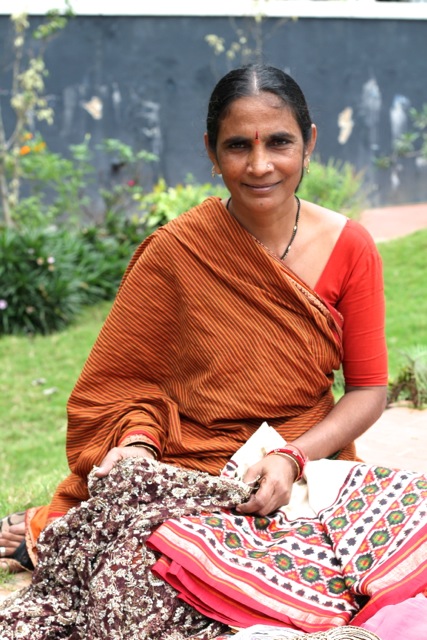
Above: Saroj Parmar showing her wares
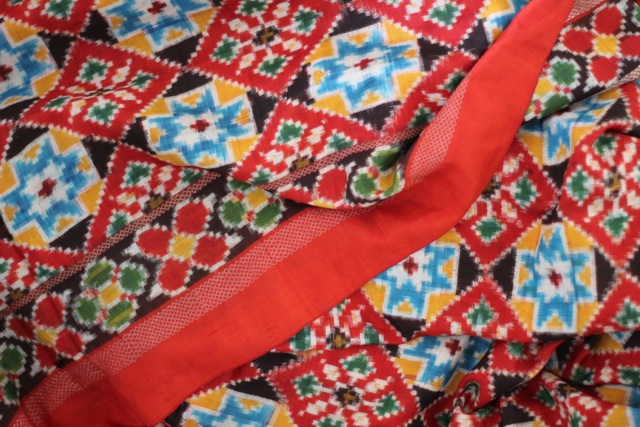
Above: Silk patola ikat sari

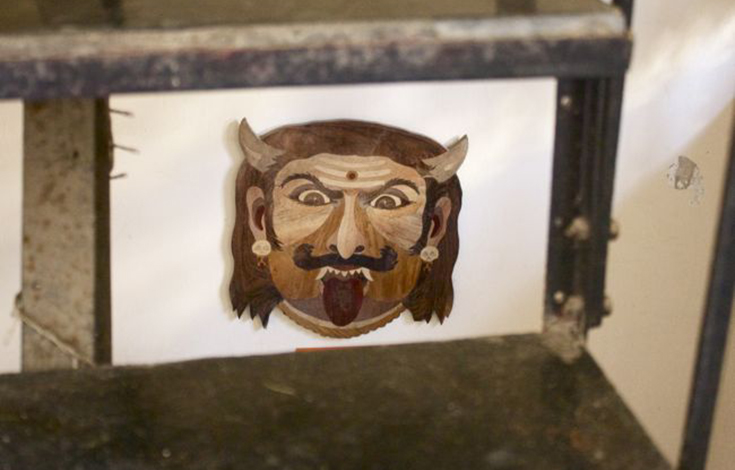
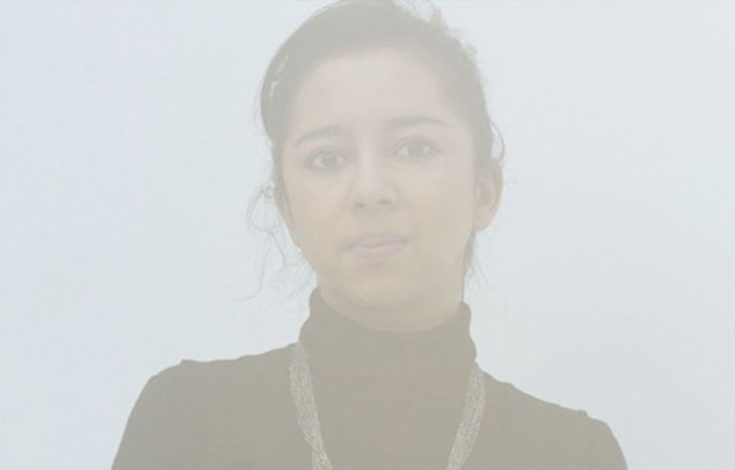
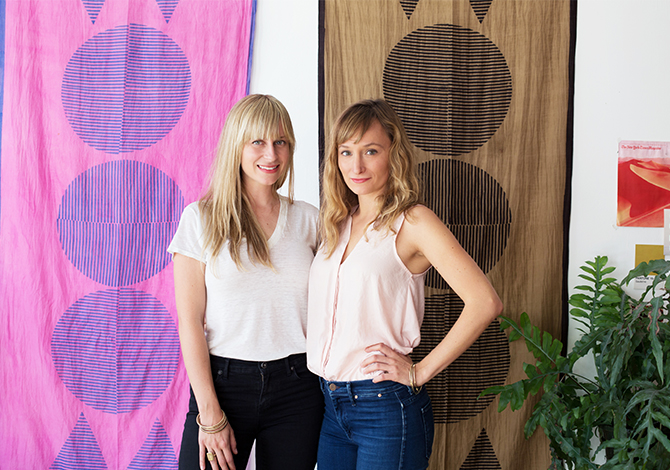
I loved reading this article. I love Patolas and hope one day I will be able to buy one .Thank you!